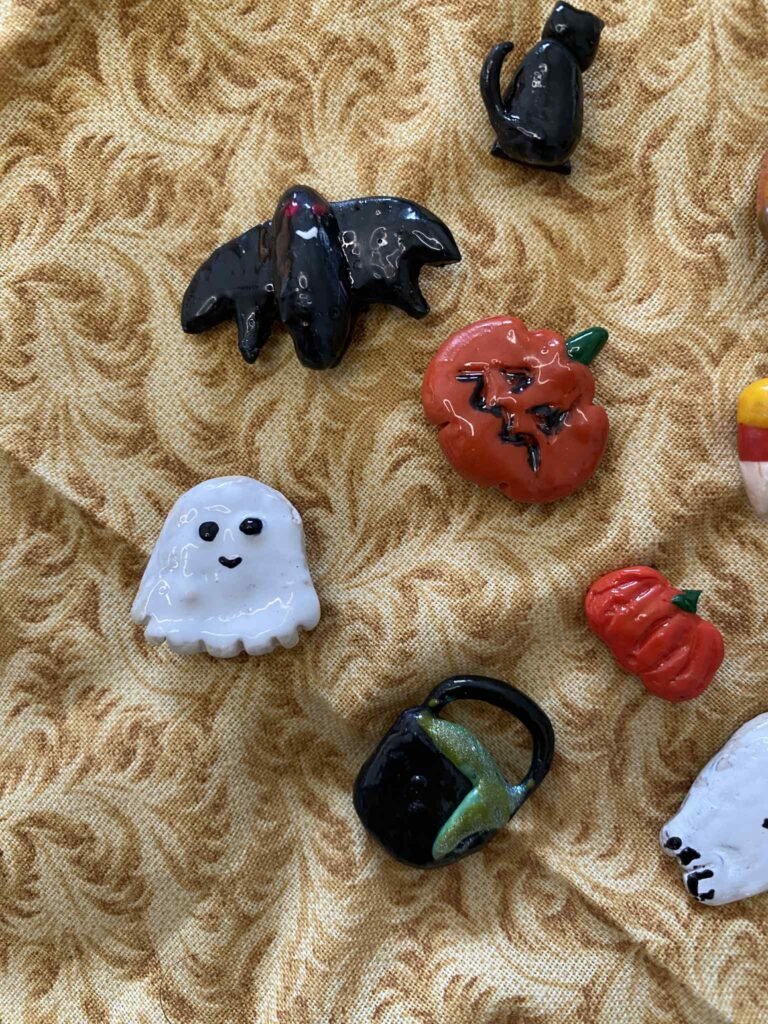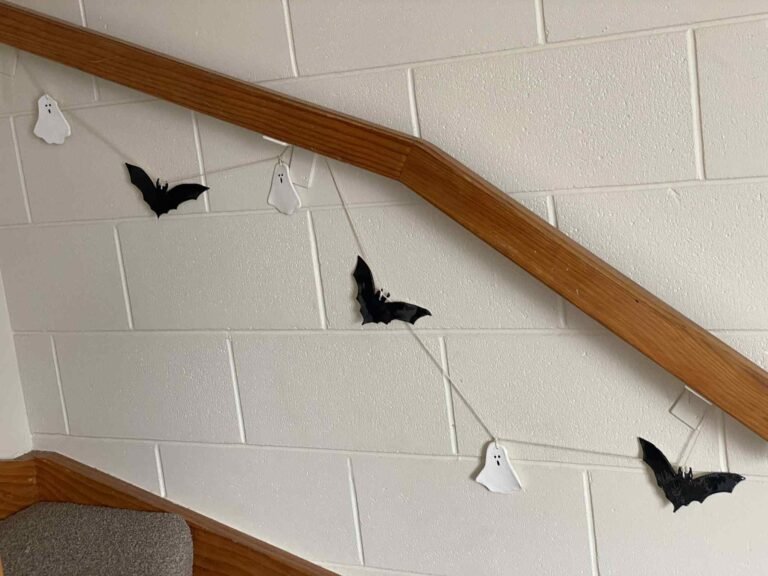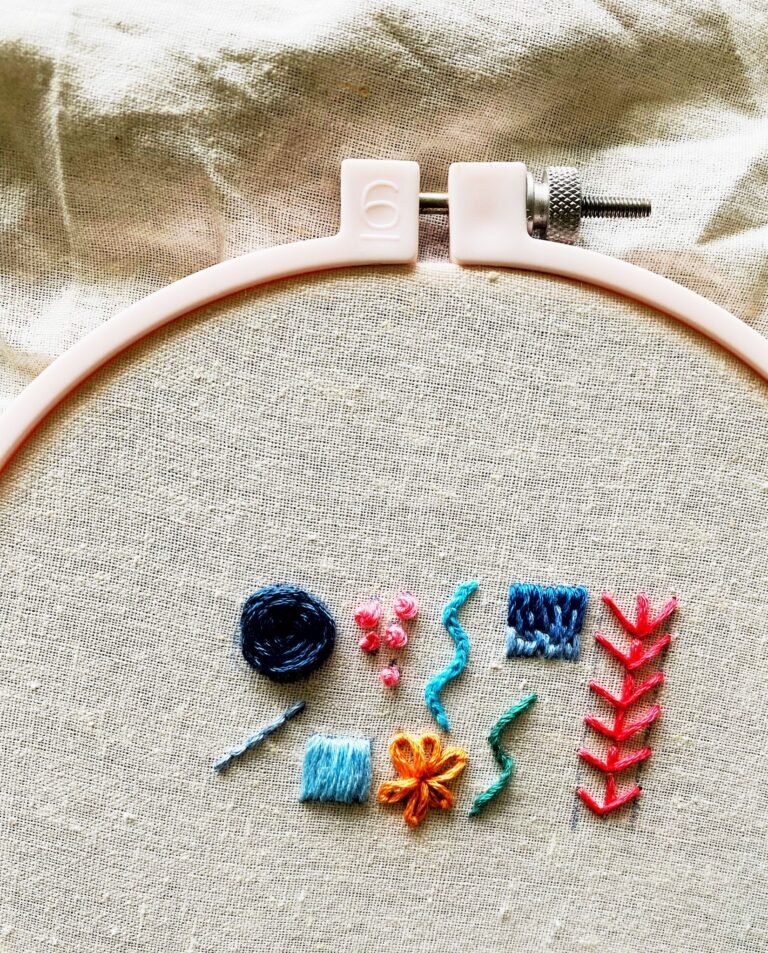7 Embroidery Stitches Every Beginner Should Learn First
Let’s talk about beginner embroidery stitches. Embroidery is a beautiful and relaxing craft, but if you’re just starting out, the variety of stitches can feel overwhelming. The good news? You don’t need to learn them all at once, infact there are 7 main beginner embroidery stitches that are used in nearly every embroidery pattern! These 7 beginner-friendly embroidery stitches are the perfect foundation for all beginners.
Shall we get started?

✂️ A Few Things to Note on Beginner Embroidery Stitches
While these stitches may seem similar at first glance, they each serve a unique purpose. They’re perfect for beginners because they’re:
- Low in complexity
- Used frequently in embroidery patterns
- Versatile across many styles
Don’t give up! Learning even the most basic stitches can be frustrating at first, and things won’t always turn out how you expect. But keep going — you’ll get there. It took me quite a while to feel confident, but once I nailed these stitches, moving on to more advanced ones was so much easier.
Remember to have fun — and happy stitching!
I have linked tutorials for each stitch, just click on the title and it should take you there
7 Beginner Embroidery Stitches…
1. Backstitch
This is one of the most useful beginner embroidery stitches you can learn. It creates a solid line, making it perfect for outlining shapes, writing text, and adding definition to your designs.
How to use it: Great for lettering, borders, and outlines.
Beginner tip: Keep your stitches even in length for a clean look.
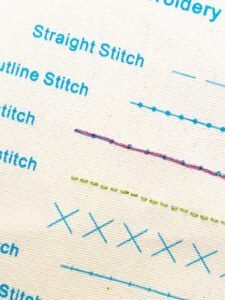
2. Running Stitch
The running stitch is a simple dashed line. It’s great for creating texture, borders, and even decorative effects.
How to use it: Borders, filling space, creating a “stitched” look.
Beginner tip: Try alternating long and short stitches for a creative twist.

3. Satin Stitch
Satin stitch is used to fill in shapes with smooth, solid color. It’s a bit trickier than the others, but worth learning for beautiful finishes.
How to use it: Petals, leaves, small shapes, or letters.
Beginner tip: Keep your stitches close together and use a hoop to maintain tension.
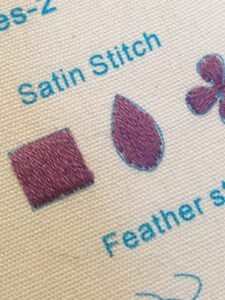
4. French Knot
These tiny, textured knots add a three-dimensional look to your embroidery. Think flower centers or accents. I mainly use french knots to mimic roses but they are great for other things too.
How to use it: Decorative accents, flower buds, eyes in faces.
Beginner tip: Wrap your thread around the needle twice for a neat knot.
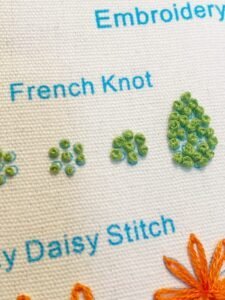
5. Chain Stitch
This fun, loopy beginner embroidery stitch creates a line that looks like a chain. It adds a decorative, vintage feel. I love to use the chain stitch for lettering. The chain stitch is very similar to the lazy daisy stitch, which is a more advanced stitch and great for floral works.
How to use it: Borders, vines, letters, or as a filling stitch.
Beginner tip: Don’t pull the thread too tightly, or the loops will vanish.

6. Split Stitch
A cousin to the backstitch, this one creates a slightly textured line. It’s soft, pretty, and great for curves.
How to use it: Outlining curves, organic shapes, florals.
Beginner tip: Use a slightly thicker thread for best results.

7. Lazy Daisy Stitch
Also known as the detached chain stitch, this one is perfect for quick little flowers and leaves.
How to use it: Daisies, petals, leafy details.
Beginner tip: Hold the loop in place with your finger before anchoring it to keep the shape neat.
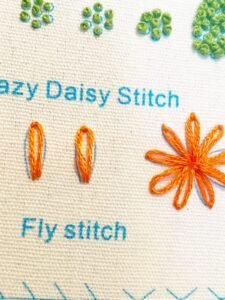
📌 Save Beginner Embroidery Stitches for Later!
Want to come back to this list when you’re learning to stitch? Pin this post on Pinterest or bookmark it for quick reference.
📥 Looking for a free pattern to practice these stitches? Download your beginner sampler here!
🧵 Final Thoughts On Beginner Embroidery Stitches
Learning embroidery doesn’t have to be hard or expensive. These 7 stitches will carry you through dozens of beginner-friendly projects. Practice them on scrap fabric, experiment with color, and most importantly—have fun!
